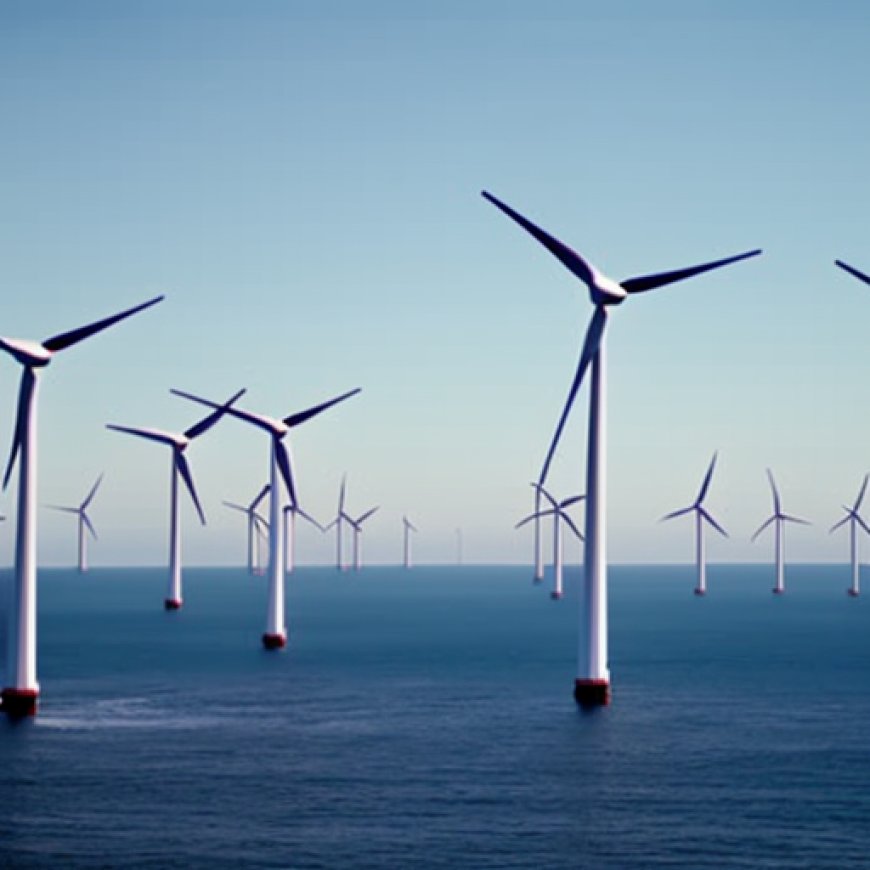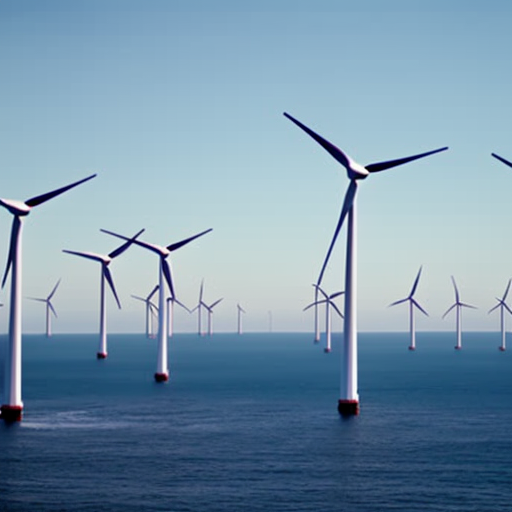Opinion: Wind farms off California’s coast should be the future of the state’s clean energy grid
Opinion: Wind farms off California's coast should be the future of the state's clean energy grid Los Angeles Times


Offshore Wind: California’s Path to Sustainable Development

California has set an ambitious goal of generating 25 gigawatts of offshore wind energy by 2045, enough to power 25 million homes. However, to truly combat climate change, strengthen the electric grid, and boost the economy, the state should aim even higher.
The Potential of Offshore Wind in California
New research from Energy Innovation, GridLab, and UC Berkeley reveals that with smart state and federal policies, California could install over 100 gigawatts of offshore wind farms along the West Coast by 2050. This would make electricity costs from offshore wind turbines comparable to onshore wind turbines and solar farms.
Furthermore, California can play a crucial role in scaling up offshore wind nationwide. While countries like China and several Northern European nations are already leading in offshore wind capacity, the U.S. is just beginning to tap into this technology. To fully realize its economic potential, the U.S. should aim for 400-500 gigawatts of offshore wind by 2050, with California leading the efforts on the West Coast.
Economic Benefits and Job Creation
Investing in offshore wind not only helps combat climate change but also creates jobs. Clean energy jobs have been growing faster than overall job growth, and embracing offshore wind could generate an additional 60,000 jobs along the West Coast by 2050 compared to a clean-energy strategy without offshore wind.
Public Support and Environmental Considerations
Recent polling shows strong support for offshore wind projects among coastal residents, with visible wind turbines having minimal impact on their desire to visit the beach. East Coast developers have implemented techniques to minimize harm to wildlife and sensitive habitats, setting a precedent for responsible development.
While concerns about environmental impact must be addressed, offshore wind farms would have a small footprint compared to the vast U.S. waters suitable for development.
California’s Role in Offshore Wind Development
California has the opportunity to lead the world in offshore wind technology and climate solutions. To seize this opportunity, prompt action is required. Governor Gavin Newsom should work with the state Legislature and the California Energy Commission to set a higher offshore wind target for 2050, signaling a strong market demand and attracting new investments.
Infrastructure managers in California should collaborate with their counterparts in Oregon and Washington to plan power line projects that support offshore wind. Additionally, the state Legislature should allocate funding for port investments and workforce training programs to drive the development of this new industry.
By embracing offshore wind, California can achieve its sustainable development goals, create economic opportunities, and contribute to global efforts in combating climate change.
Michelle Solomon is a senior policy analyst at Energy Innovation, an energy and climate policy research firm in San Francisco. Taylor McNair is a program manager for Berkeley-based GridLab, a nonprofit focused on power grid transformation.
SDGs, Targets, and Indicators Relevant to the Issues Discussed in the Article
1. Which SDGs are addressed or connected to the issues highlighted in the article?
- SDG 7: Affordable and Clean Energy
- SDG 8: Decent Work and Economic Growth
- SDG 9: Industry, Innovation, and Infrastructure
- SDG 13: Climate Action
- SDG 14: Life Below Water
2. What specific targets under those SDGs can be identified based on the article’s content?
- SDG 7.2: Increase substantially the share of renewable energy in the global energy mix.
- SDG 8.2: Achieve higher levels of economic productivity through diversification, technological upgrading, and innovation.
- SDG 9.4: Upgrade infrastructure and retrofit industries to make them sustainable.
- SDG 13.2: Integrate climate change measures into national policies, strategies, and planning.
- SDG 14.2: Sustainably manage and protect marine and coastal ecosystems to avoid significant adverse impacts.
3. Are there any indicators mentioned or implied in the article that can be used to measure progress towards the identified targets?
- Percentage of offshore wind in the energy mix
- Number of jobs created by offshore wind projects
- Investment in port infrastructure for offshore wind development
- Reduction in greenhouse gas emissions from offshore wind compared to other energy sources
- Extent of collaboration between infrastructure managers in different states for offshore wind projects
- Extent of environmental impact mitigation measures implemented in offshore wind farms
Table: SDGs, Targets, and Indicators
| SDGs | Targets | Indicators |
|---|---|---|
| SDG 7: Affordable and Clean Energy | 7.2: Increase substantially the share of renewable energy in the global energy mix. | Percentage of offshore wind in the energy mix |
| SDG 8: Decent Work and Economic Growth | 8.2: Achieve higher levels of economic productivity through diversification, technological upgrading, and innovation. | Number of jobs created by offshore wind projects |
| SDG 9: Industry, Innovation, and Infrastructure | 9.4: Upgrade infrastructure and retrofit industries to make them sustainable. | Investment in port infrastructure for offshore wind development |
| SDG 13: Climate Action | 13.2: Integrate climate change measures into national policies, strategies, and planning. | Reduction in greenhouse gas emissions from offshore wind compared to other energy sources |
| SDG 14: Life Below Water | 14.2: Sustainably manage and protect marine and coastal ecosystems to avoid significant adverse impacts. | Extent of collaboration between infrastructure managers in different states for offshore wind projects Extent of environmental impact mitigation measures implemented in offshore wind farms |
Behold! This splendid article springs forth from the wellspring of knowledge, shaped by a wondrous proprietary AI technology that delved into a vast ocean of data, illuminating the path towards the Sustainable Development Goals. Remember that all rights are reserved by SDG Investors LLC, empowering us to champion progress together.
Source: latimes.com

Join us, as fellow seekers of change, on a transformative journey at https://sdgtalks.ai/welcome, where you can become a member and actively contribute to shaping a brighter future.







